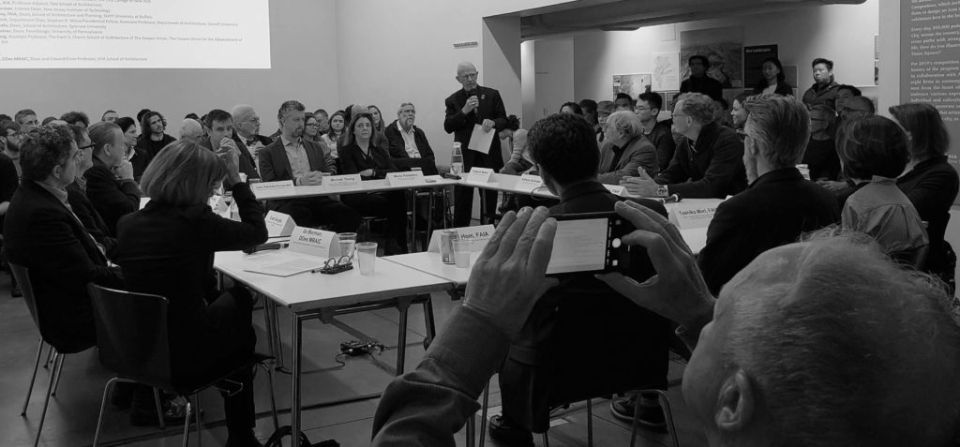Is Postmodernism the new MAGA? It was an unexpected connection Ila Berman, Dean of Architecture at the University of Virginia, posed: “Is this just another, ‘Make Architecture Great Again’ moment, that’s aligning with what’s happening politically?”
Berman was moderating the recent Dean’s Roundtable, an annual gathering of educational leaders in the northeast, orchestrated by the Center for Architecture, who frame it as a discussion of “current directions in architectural education.” The event came after an Architecture and Design College Fair held earlier that day—two parents and their college-aged children sat next to me—lending the discussion a slightly promotional air. Nevertheless, Berman did a good job of confronting the participants with some uncomfortable questions.
....
In this context, Postmodernism—an affinity for patterns, colors, basic forms, for ironically quoting history by including, say, a non-load bearing arch or an unnecessary pediment—seemed like a non-sequitur, given our precise moment in history: when California is burning, liberal democracy is in peril, authoritarian impulses are on the rise, and affordable housing remains unaffordable.
To understand why it came up, we have to look at 1960s, the last time architecture students were filled with this much activist energy and the formative years for most of the Deans at the table. It is an irony of architecture’s current establishment that many trace their own authority to the toppling of the last establishment: The 1968 dissolutionof the ur-architecture school, Paris Ecole des Beaux Arts, was an event for which Bernard Tschumi and Rem Koolhaas both claim to have been present. At one point, demonstrating students locked an administrator inside a glass parking booth while the students, Tschumi wrote, fed him “a number of tracts and copies of the revolutionary newspaper ‘TOUT’ to read.” Eager to stay out of that booth, today’s deans go to great lengths to show they’re on the side of the activists.
The Postmodernists, arguing such activism was just show, eschewed it. Robert Venturi, who in his 1966 book, Complexity and Contradiction in Architecture, suggested that the activism might have even distracted architects from making good buildings: “The architect’s ever diminishing power and his growing ineffectualness in shaping the whole environment can perhaps be reversed, ironically, by narrowing his concerns and concentrating on his own job.”
....
